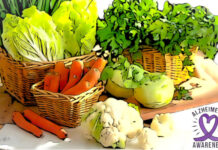Almost all extra virgin olive oil is contaminated with mineral oils, pesticides and plasticizers. This is according to Öko-Test, the German consumer magazine, which analyzed 20 brands of EVOO, including organic, including 6 available in Italy.
Contaminated extra virgin olive oil
The analytical laboratory commissioned by Öko-Test focused its research on some now-known contaminants
– mineral oils MOSH (saturated hydrocarbons from mineral oils) and MOAH (aromatic hydrocarbons from mineral oils), the latter being suspected carcinogens. These contaminants have been detected in the past in numerous foods and come from sources scattered throughout the production chain. (2)
– plasticizers, probably released from production and bottling plants,
– pesticides.
The result of the test
The outcome of the analysis is disappointing. 19 of the 20 products were found to be contaminated, although still within legal limits. Italian brands (or at least brands marketed in Italy) all fail. These are, in order.
– Filippo Berio, called the worst oil in the test due to ‘greatly increased’ mineral oil residues, also MOAH. Traces of PAHs, plasticizers, and 2 pesticides, including deltamethrin, were also detected in this product. The manufacturer disputes the outcome of the test, as we report below.
– Dennree (Farchioni), with ‘greatly increased’ mineral oil residues, also MOAH, and PAH,
– De Cecco, with mineral oil contaminants ‘greatly increased, also MOAH, traces of polycyclic aromatic hydrocarbons (PAHs) and residues of a pesticide,
– Farchioni organic farmhouse, increased levels of mineral oils, PAHs and traces of plasticizers,
– Primadonna (LIDL), judged ‘unsuitable’ due to the presence of mineral oil components.
The Bertolli case
Among the samples of extra virgin olive oil available in Italy, the Bertolli was judged and rejected, but Öko-Test gives an account of it in a separate article, due to the publication ban imposed by the legal department of the producer (the Spanish multinational Deoleo).
As with the other oils, in the Bertolli, which we consider to be the twentieth in the test, levels of mineral oil contamination were found to be ‘greatly increased.’
The only one promoted is the organic Rapunzel Extra Virgin Olive Oil Kreta P.G.I, completely free of mineral oils and other contaminants.
Filippo Berio disputes Ökotest’s analysis
SALOV spa, owner of the Filippo Berio brand, disputes the negative result of tests conducted by German consumer magazine Ökotest.
The company states that ‘the method used to analyze and classify Extra Virgin Oils is inappropriate and not in accordance with what the International Olive Oil Council and EU regulations indicate.’
The Filippo Berio oil analyzed by Ökotest, the company further states, ‘ismarketed in Germany but is not on the Italian market.’
Regarding the three parameters that led Ökotest to fail the product, SALOV spa states that
– pesticide residues detected (deltamethrin and Fosmet) are below legal limits. A detail clarified, in fact, even by the authors of the test,
– MOAH mineral oil residues were measured by a methodology not recognized by ‘official bodies,’ and European legislation does not indicate a limit to MOAH and MOSH contamination,
– chlorinated compounds detected by Ökotest on the product packaging were found‘”in the outer liner cover” of the cap therefore in an area not even in contact with the food product‘.
The full statement from SALOV Spa is available in this attachment.
Marta Strinati
Notes
(1) Lisa-Marie Karl/Katja Tölle/Lena Wenzel. Olivenöl-Test: Bis auf eins alle mit Mineralöl verunreinigt, Öko-Test 29.4.22, https://www.oekotest.de/essen-trinken/Olivenoel-Test-Bis-auf-eins-alle-mit-Mineraloel-verunreinigt_12637_1.html
(2) The mineral oils MOAH and MOSH were, among others, traced in extra virgin olive oil in the French Que Choisir test and in an earlier work by Öko-Test.
Professional journalist since January 1995, he has worked for newspapers (Il Messaggero, Paese Sera, La Stampa) and periodicals (NumeroUno, Il Salvagente). She is the author of journalistic surveys on food, she has published the book "Reading labels to know what we eat".







